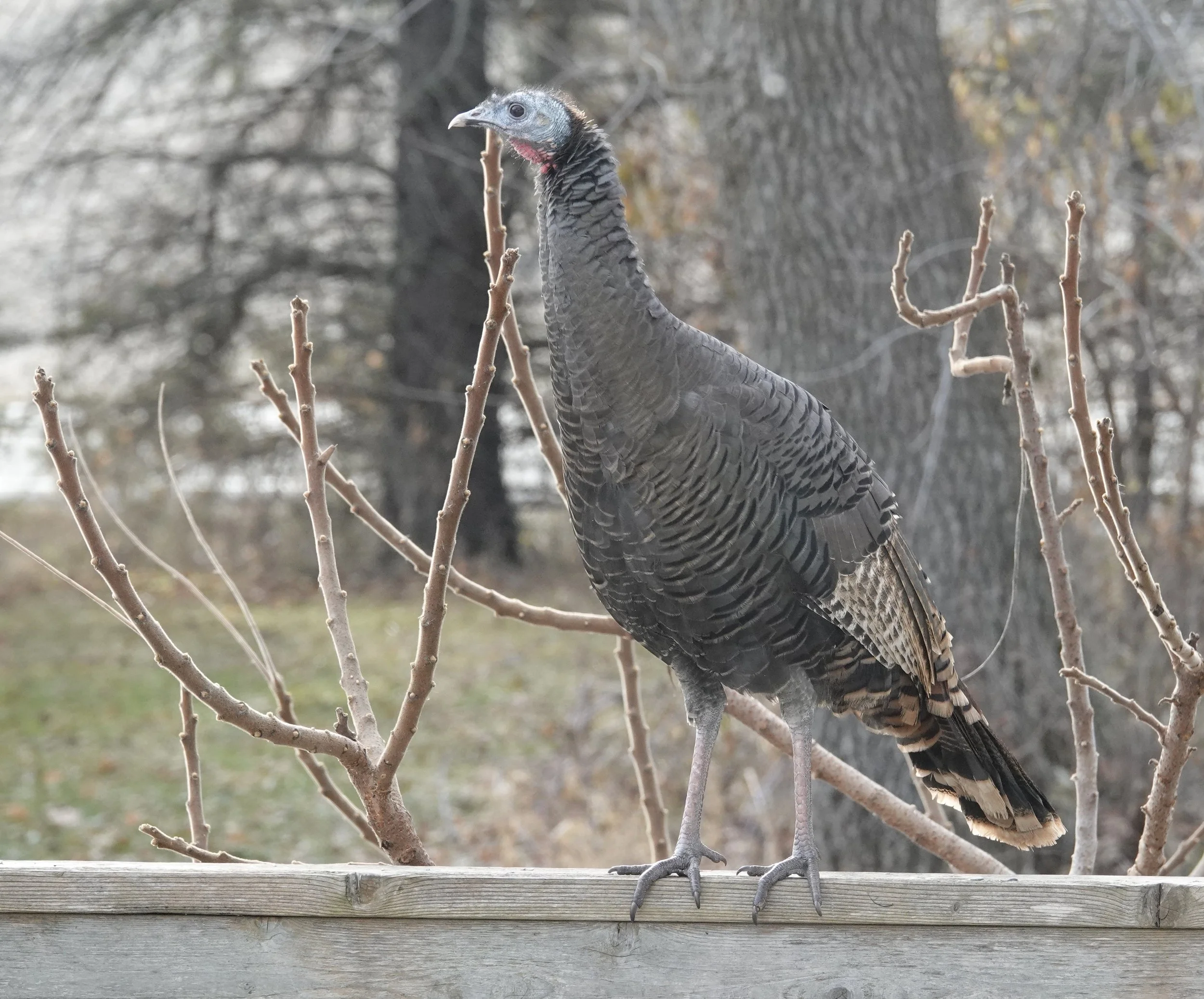Naturally
The opossum’s pink fingers produce awe and awwww. My job description was defined by Mary Oliver, who wrote, “Instructions for living a life. Pay attention. Be astonished. Tell about it.” Things are always happening. Pine siskins are goldfinches wearing striped pajamas. Deer think they have the right-of-way. They don’t always pay attention. It’s not fair, but we have to pay attention for them.
Raccoons spend most of the winter hunkered down in dens but emerge occasionally to forage for food and drink water. They aren’t true hibernators, entering a prolonged state of inactivity called torpor in which they can sleep for weeks at a time, relying on their accumulated fat stores.
Dena Selby of Haines, Alaska, kindly fed a few pecans to Steller’s jays and now the jays are attacking the windows of her house, demanding more pecans. What can Dena do? Feed them more pecans.
I was tooling around Chicago in a rental car, while someone on the radio marveled at the traffic savvy of the city’s coyotes, which allegedly look both ways before crossing the street and use crosswalks at red lights. They have surpassed our ability to do that.
It happens every fall; a hen turkey decides to trot around our yard. I don’t know why she does it, but I’m sure she has a good reason. In the fall, hen turkeys live in flocks with their female offspring. Hens that weren’t successful hatching chicks may form smaller flocks with similar lone hens. Male turkeys form their own flocks, which might be segregated by age. Young male turkeys, commonly called jakes, band together and older males form their own groups. They likely hold clandestine meetings. They interact with others within a flock and call frequently to each other. An essential part of a flock’s life is establishing dominance, which leads to squabbles, dominance displays, fights and kerfuffles. A gobble can be heard occasionally as the pecking order is sorted out.
Dr. Splatt
Brewster Bartlett, a retired science teacher at Pinkerton Academy, a high school in Derry, New Hampshire, once ran the RoadKill Project, a program connecting students from schools around the nation to study flattened fauna. Students involved in the RoadKill Project adopted roads and kept track of the dead critters they encountered from the tiniest frogs to stray pets to deer. Bartlett, known as “Dr. Splatt,” found that daylight-saving time had no effect on the roadkill count, but more dead animals were counted during a new moon than a full moon, perhaps because the animals moved more freely under the cover of darkness. Roads posted at 35 mph had more carnage than highways because the slower roads are often winding and travel through wooded, rural or suburban areas.
Q&A
“How do you tell if a crow is a male or female?” Individuals vary in size and there are regional differences, but it's nearly impossible to tell male and female crows apart. The only way to differentiate between them is if they're perched close together when a slight difference in size might be detected. Males are generally larger than females.
“What is another name for a mountain lion?” Ralph or Betty would be suitable names, but I doubt they’d come if you called them. Cougar, panther, puma, painter, el leon and catamount are other handles.
“Where do garter snakes go in the winter?” Garter snakes are found throughout Minnesota. To keep from freezing during the winter, garter snakes spend the entire winter below the frost line in a state of brumation. Hibernation in reptiles differs from mammals because a reptile doesn’t survive on its fat reserves. In reptiles, hibernation is called brumation. Snakes are ectothermic (cold-blooded) animals and a garter snake's metabolism slows and its low activity prevents it from burning energy. Sluggish but not asleep, snakes move farther underground if severe winter temperatures and a lack of insulating snow cover drive the frost line deeper. They congregate in a rocky outcrop, a crevice, a natural cavity, an ant mound or a tunnel made by a burrowing animal. Some winter dens are used by garter snakes year after year. Garter snakes may come out to bask in the sun for a few hours on warm days before returning to the hibernaculum.
Thanks for stopping by
“It is easy for me to imagine that the next great division of the world will be between people who wish to live as creatures and people who wish to live as machines.”―Wendell Berry.
“It is my belief, you cannot deal with the most serious things in the world unless you understand the most amusing.”—Winston Churchill.
Do good.
©️Al Batt 2023
A hen turkey spends a lot of time looking in the windows of our house. My wife says that the big bird is seeing its reflected image, but I’m certain it’s because she has a crush on me. Men sense these things. A crow named Splat has hit my office window with significant droppings that run down the glass, creating an odd form of art. I think she’s jealous of the turkey. Photo by Al Batt.

